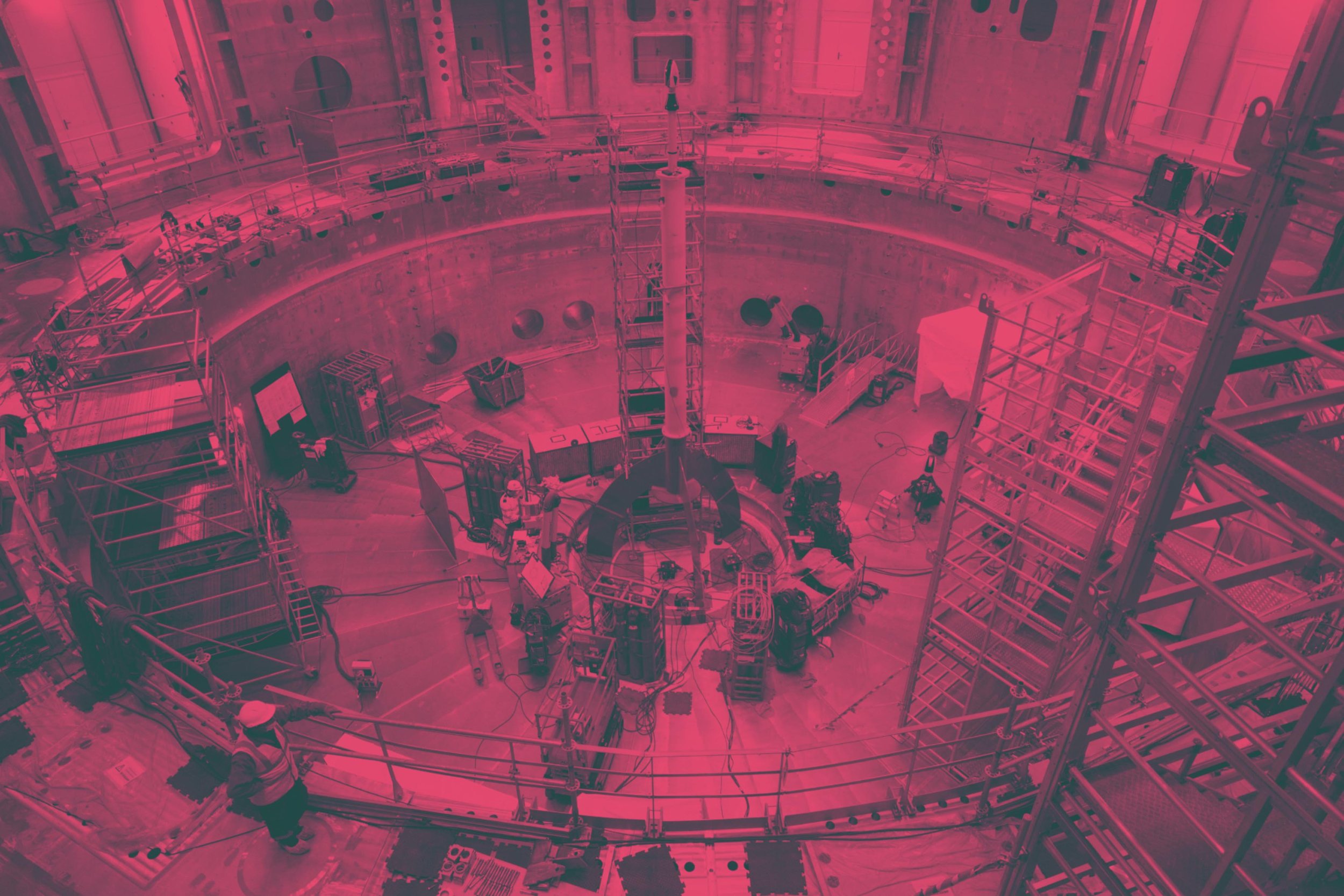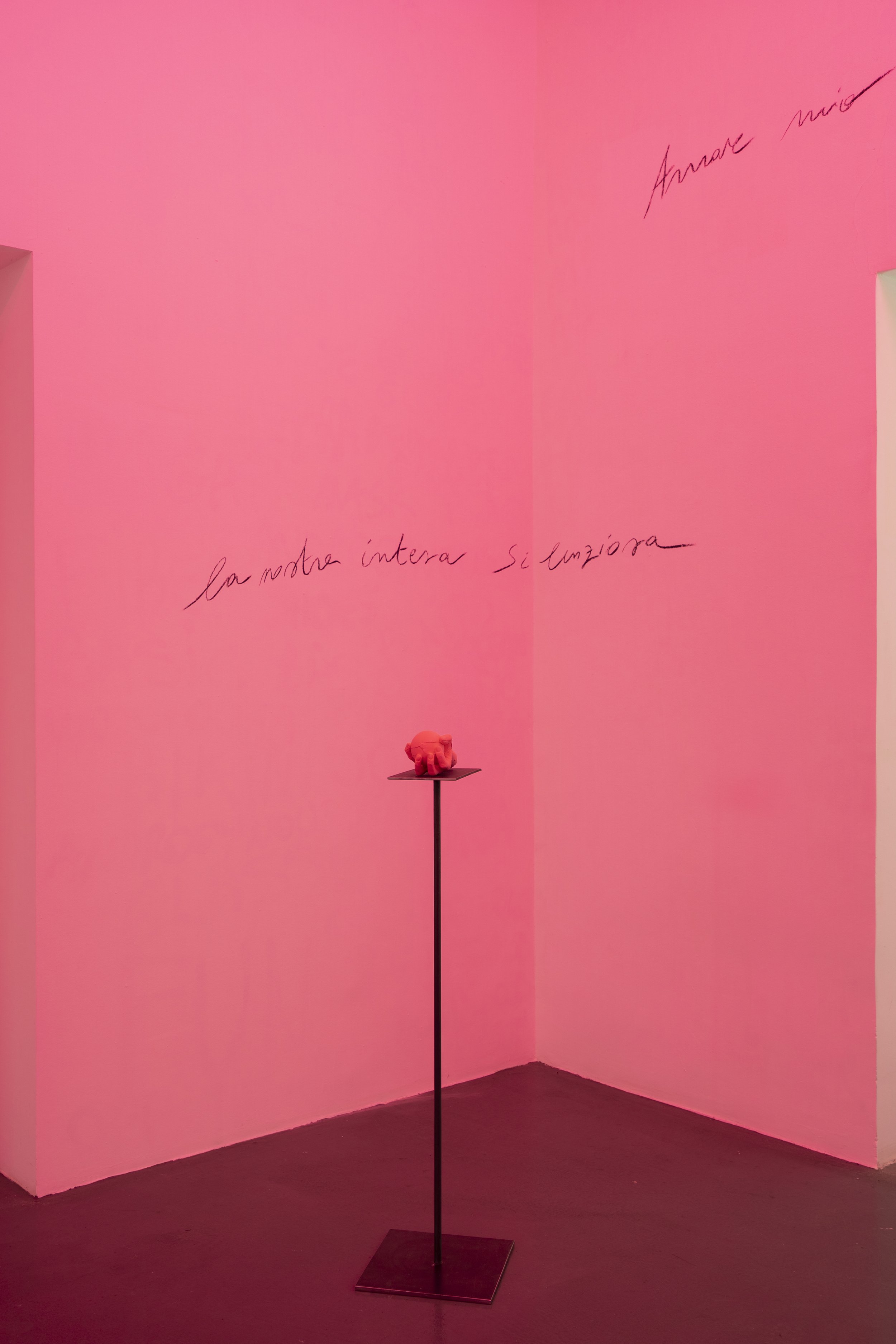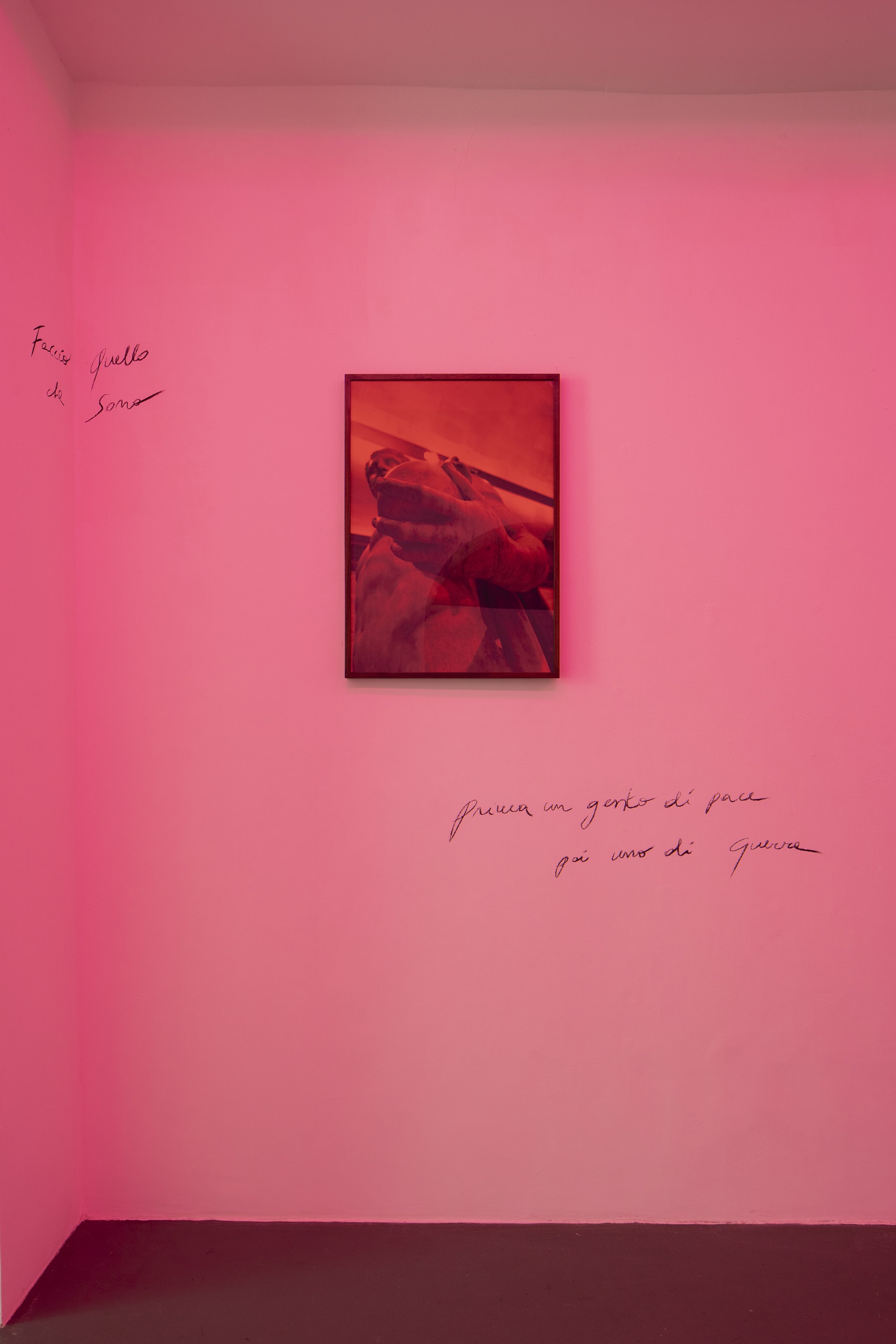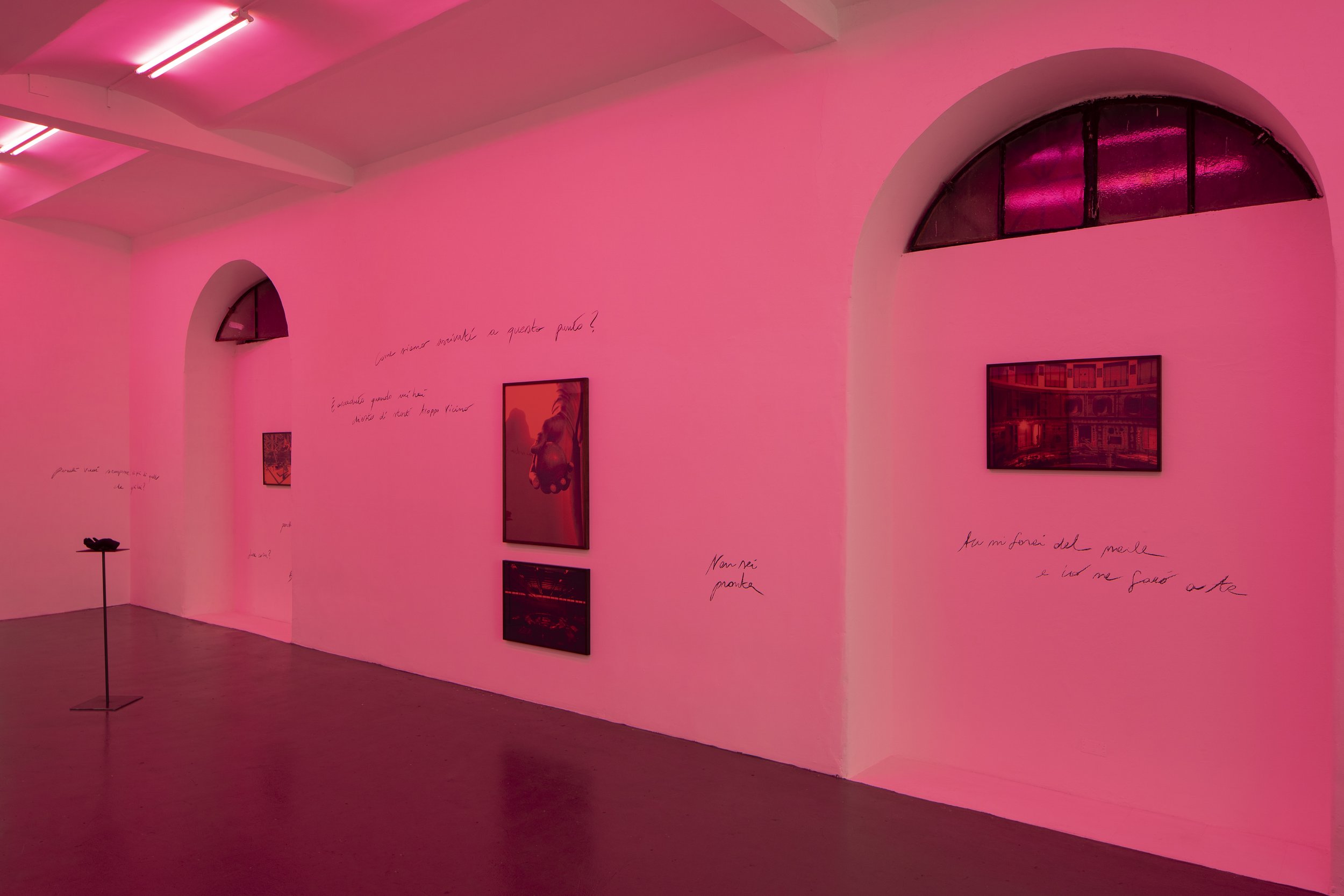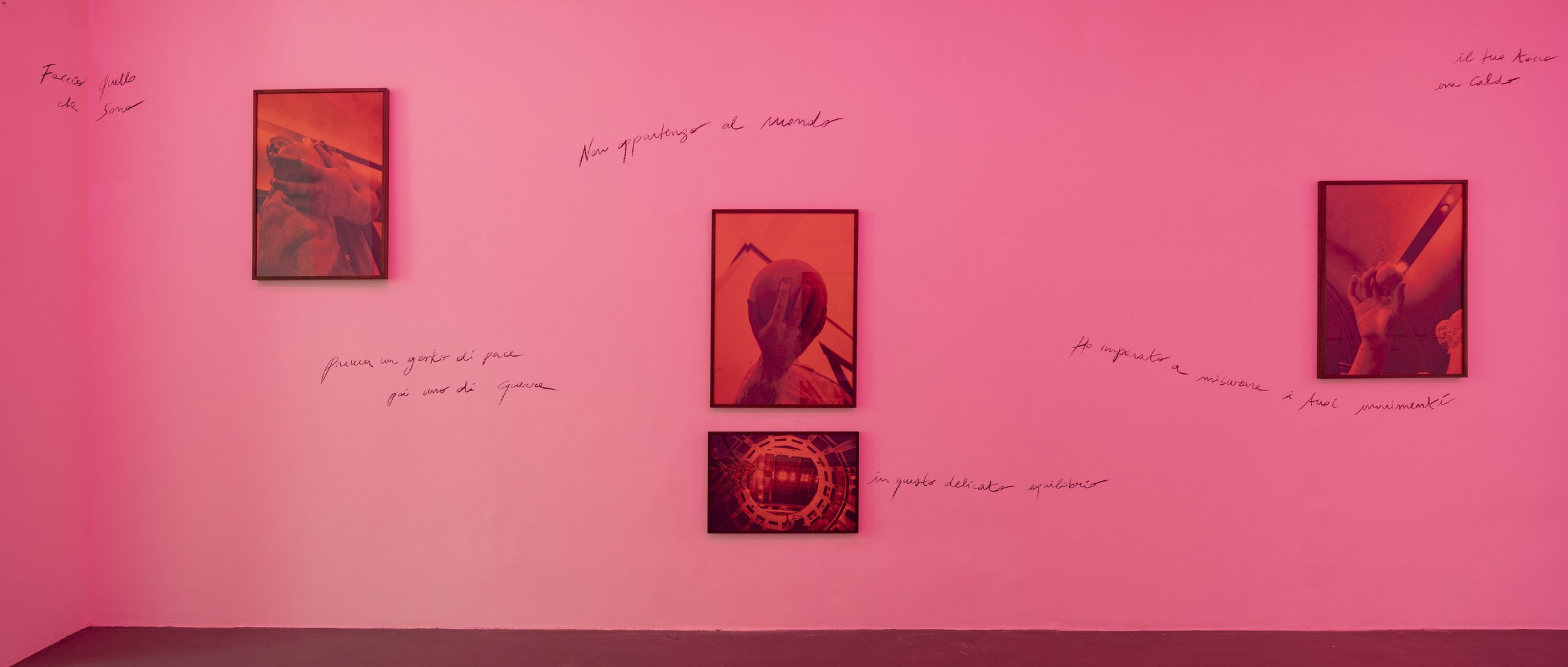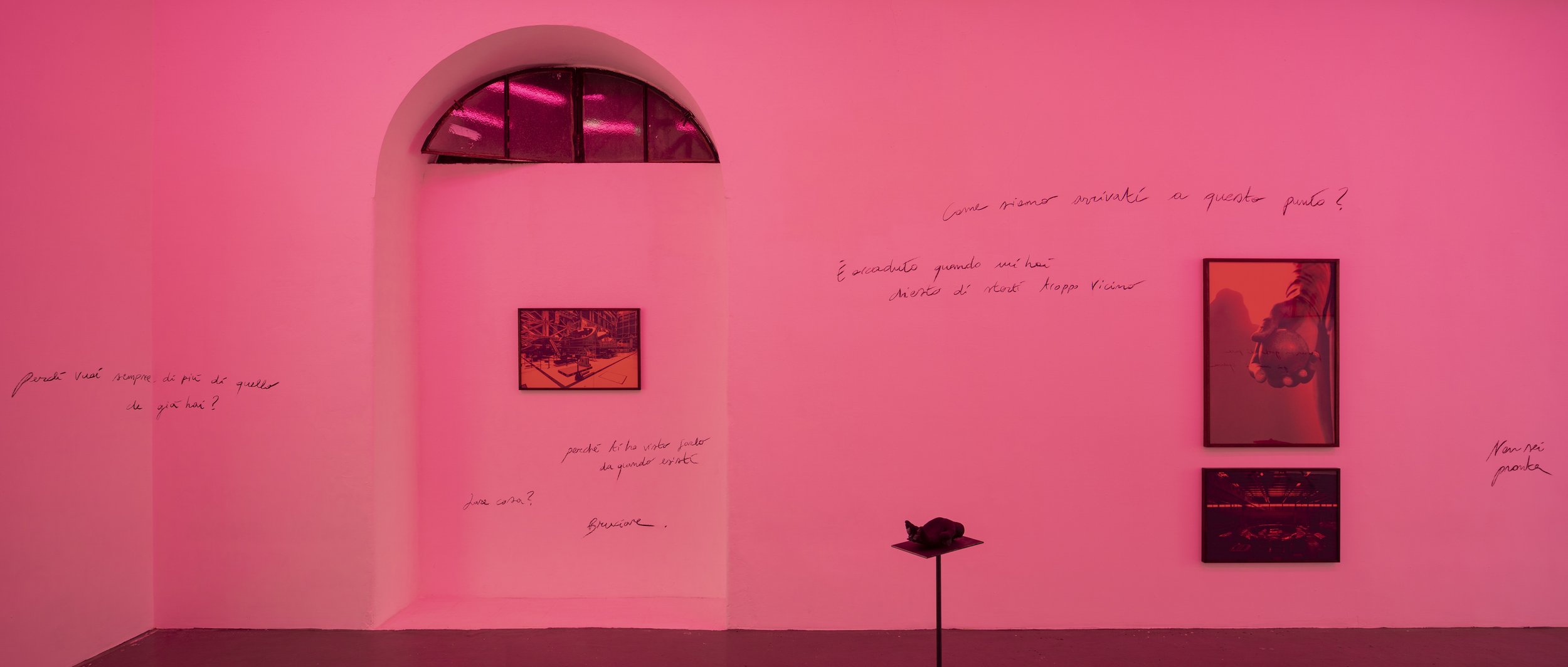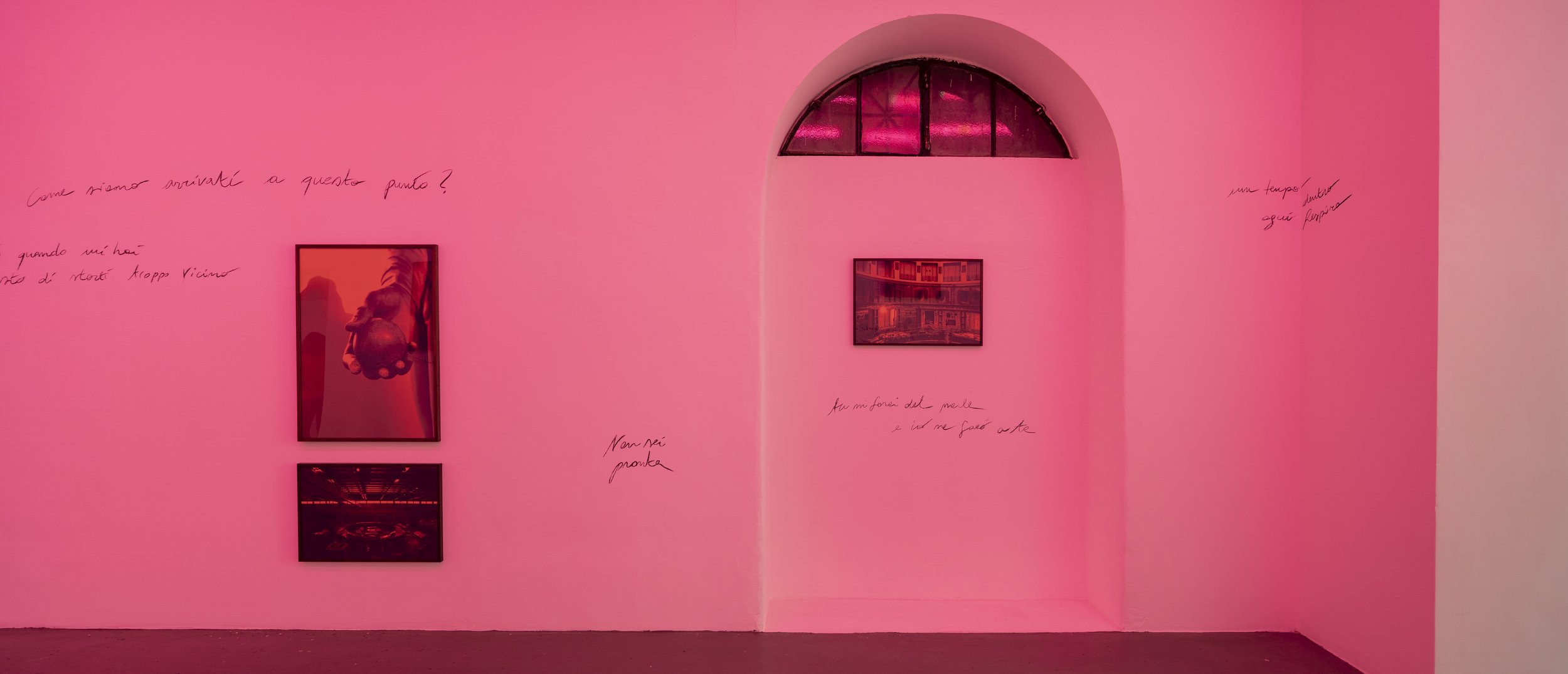FEDERICA DI CARLO
Volevo il Sole
January 13 – March 3, 2023
PostmastersROMA is extremely pleased to present the first solo exhibition of Federica Di Carlo with the gallery. I Wanted the Sun is an immersive show about a love story between the Sun and the Earth.
The idea for this series of works initiated from and is inspired by the world's largest fusion experiment - ITER (International Thermonuclear Experimental Reactor) - where the scientists are attempting to recreate a sun on earth.
Federica Di Carlo often collaborates with scientists and physicists of the various research centers around the world for the creation of her artworks. She is the winner of the Italian Ministry of Culture's prestigious 18th month Italian Council Grant 10th Research Award, which allowed her to follow the ITER experiment in the field. She was the only artist allowed inside the heart of the experiment's nuclear reactor.
Infatuated by this impossible act - the idea of bringing the sun to the (1.3 million times smaller) earth, Federica Di Carlo designed the experience of seeing her newest series of works in a multi sensorial way.
Giuliana Benassi, the celebrated Italian curator, goes in depth into the exhibition in her text below:
The prosopopoeia of Nature has distant origins. From Lucretius's De Rerum Natura to Giacomo Leopardi's Operette Morali, the need to bring Nature into the human dimension through dialogue is almost an ancestral attitude of human beings.
Federica Di Carlo's I Wanted the Sun brings together a corpus of works that fall within this logic and reflection of personification of two great engines of life: the Earth and the Sun. Both are imagined by the artist in a heartbreaking dialogue comparable to that between two lovers who, burnt by the same flame of their love, realise the destructive power and danger of their relationship. The end is just around the corner: "I will watch you burn" is among the many phrases that emerge in relation to the works, one of the most significant of this amoris ardere.
Straddling a poetic and literary reference to the relationship between human being and nature and a strong anchorage to new scientific research, the artist constructs a narrative stretched between a reference to the universal history of "stepmotherly" Nature and the contingent history of the "monster" human being.
It all began in 2020 in Cadarache, in the south of France, where the artist went for a residency. This isolated place from human existence located on more than 42 hectares is ITER. It is a project that aims to build the world's largest fusion machine, namely the reconstruction of the Sun on Earth. In the process of research and work production of Di Carlo’s practice, there is always, shall we say, an intrusion of the world of scientific research. Alongside physicists and astronomers, the artist often finds herself participating as an observer of the latest experiments. This gaze is here translated into photographic works that immortalise - exclusively - the heart of the reactor where one of the world's most eagerly awaited experiments is taking place. Suspended as if in time, the artist's film is tinged with magenta. Not by chance! Magenta is by definition the colour that does not exist, i.e. it is not part of the optical spectrum. This characteristic of magenta therefore makes the images almost removed from the temporal dimension, as if seen from a high and superior gaze, belonging to a point of view outside the Earth. We do not know whether we are dealing with imaginative glimpses of the future or reminiscences of a distant past. Immersed in the chromatic atmosphere of magenta, the images form a wall of visual relationships alongside other shots taken in European museums such as the Louvre in Paris, the Vatican Museums in Rome and the National Archaeological Museum in Naples. They are all details of statues of Urania and Apollo, portrayed with a celestial body in their hands. The slight gesture with which the deities hold the sphere is captured by the artist as an act of extreme respect, in contrast to the plaster sculptural work that emphasises a strong and almost violent grip on the sphere. It is the hand of the contemporary human being who 'wants the sun', at all costs. On the other side, a black hand, as if been burnt, is open, a sign of hope as the scientists lets go in search of freedom.
In this glowing atmosphere, the alarm of burning is present, it is an echo whispered in the ear. Certain phrases from the dialogue between the Sun and the Earth (written in 3 acts by the artist) are written on the walls between the photographic prints, imprinted with ashes. They bind and suspend the images, like a Warburgian table of Mnemosyne in which the connections shatter temporality in favour of a visual and graphic path of symbolic inversions.
Images and words in the exhibition work together to approach what is otherwise ineffable. "But the world turns as always": these are the words of a song by Jimmy Fontana Il Mondo whose faint voice emerges from the kinetic work that ideally closes the exhibition. Suspended and dangling from the ceiling, an old globe modified by the artist as a moving and sounding device, allows, in its slight rotation, the Italian singer-songwriter's mispronounced notes to flow to the melody of Magnetic Field Sun, the ESA's archived sound produced by the meeting of the Earth's sound waves and those of the Sun. Once again, the relationship between the Sun and the Earth is consummated in an encounter, a clash, an inescapable relationship where each of us can project ourselves, in that precarious balance of giving and receiving, holding on to the question:
"Why do you always want more than what you already have?".
- Giuliana Benassi, January 2023
PostmastersROMA è lieta di annunciare la prima mostra di Federica Di Carlo con la galleria. Volevo il Sole è una mostra immersiva che racconta di una grande storia d’amore tra il Sole e La Terra.
L'idea di questa serie di lavori si ispira al più grande esperimento di fusione nucleare al mondo: ITER (International Thermonuclear Experimental Reactor) che ha come obiettivo la creazione di un sole sulla terra.
Federica Di Carlo collabora spesso con fisici e scienziati di vari centri di ricerca nel mondo per la realizzazione delle sue opere.
E’ vincitrice del prestigioso premio di ricerca Italian Council (10a edizione) promosso dal Ministero della Cultura italiano, della durata di 18 mesi, che le ha permesso di seguire l’esperimento ITER sul campo. È stata l'unica artista autorizzata ad entrare dentro il cuore del reattore nucleare dell'esperimento.
Ispirata da questo atto impossibile - l'idea di portare il sole sulla terra (1,3 milioni di volte più piccola), Federica Di Carlo ha realizzato un'esperienza multisensoriale per la sua nuova serie di opere.
Giuliana Benassi, celebre curatrice italiana, approfondisce la mostra nel suo testo che segue:
La prosopopea della Natura ha origini lontane. Dal De Rerum Natura di Lucrezio alle Operette Morali di Giacomo Leopardi, l’esigenza di calare la Natura nella dimensione umana attraverso il dialogo è quasi un atteggiamento ancestrale dell’essere umano.
Volevo il Sole di Federica Di Carlo raccoglie un corpus di opere che rientrano in questa logica e riflessione di personificazione di due grandi motori di vita: la Terra e il Sole. Entrambi immaginati dall’artista in un dialogo straziante paragonabile a quello tra due amanti che, bruciati dalla stessa fiamma del loro amore, constatano il potere distruttivo e la pericolosità della loro relazione. La fine è dietro l’angolo: “Ti guarderò bruciare” è tra le tante frasi che emergono in relazione alle opere, una delle più significative di questo amoris ardere.
A cavallo tra un richiamo poetico e letterario sul rapporto essere umano-natura e un forte ancoraggio alle nuove ricerche scientifiche, l’artista costruisce una narrazione tesa tra il richiamo alla storia universale della Natura “matrigna” e quella contingente dell’Essere umano “mostro”.
Tutto nasce nel 2020 a Cadarache, nel sud della Francia, dove l’artista si è recata in occasione di una residenza. In questo luogo di oltre 42 ettari e isolato dai centri abitati c’è ITER, un progetto che mira a costruire la macchina per la fusione più grande al mondo, vale a dire la ricostruzione del Sole sulla Terra. Nel processo di ricerca e di produzione del lavoro c’è sempre nella pratica di Di Carlo una, diciamo così, intrusione nel mondo della ricerca scientifica. Accanto a fisici e astronomi, spesso l’artista si trova a partecipare in veste di osservatrice delle più recenti sperimentazioni. Questo sguardo si traduce qui in opere fotografiche che immortalano - e in maniera esclusiva- il cuore del reattore in cui avviene uno degli esperimenti più attesi al mondo. Sospeso come nel tempo, la pellicola dell’artista si tinge di color magenta. Non a caso! Il magenta è per definizione il colore che non esiste, ossia che non fa parte dello spettro ottico. Questa sua caratteristica rende perciò le immagini quasi sottratte dalla dimensione temporale, come viste da uno sguardo alto e superiore, appartenente ad un punto di vista fuori dalla Terra. Non sappiamo se ci troviamo di fronte a scorci immaginifici del futuro o a reminiscenze di un passato remoto. Immerse nell’atmosfera cromatica del magenta le immagini compongono una parete di relazioni visive accanto ad altri scatti realizzati in alcuni musei europei come Louvre di Parigi, i Musei Vaticani di Roma e il Museo Archeologico Nazionale di Napoli. Sono tutti dettagli di statue di Urania e di Apollo, ritratte con un corpo celeste in mano. Il gesto lieve con cui le divinità tengono la sfera è colto dall’artista come atto di estremo rispetto, in contrasto con l’opera scultorea in gesso che enfatizza una presa forte e quasi violenta della sfera. E’ la mano dell’essere umano contemporaneo che “vuole il sole”, a tutti i costi. Dall’altra parte, una mano nera, come bruciata, è aperta, ha lasciato la presa in segno di speranza come fa lo scienziato che lascia andare, per una storia d’amore di libertà.
In questa atmosfera incandescente l’allarme del bruciare è presente, è una eco sussurrata all’orecchio. Alcune frasi del dialogo tra il Sole e la Terra ( scritto in 3 atti dall’artista) sono riportate sulle pareti tra le stampe fotografiche, impresse con un legno bruciato. Esse legano e sospendono le immagini, come una tavola warburghiana di Mnemosyne in cui le connessioni fanno a pezzi la temporalità a favore di un percorso visivo e grafico di inversioni simboliche.
Immagine e parola nella mostra collaborano per avvicinarsi a ciò che è altrimenti ineffabile. “Ma il mondo gira come sempre”: sono le parole di una canzone di Jimmy Fontana Il mondo la cui voce flebile esce dall’opera cinetica che chiude idealmente il percorso espositivo. Sospeso e pendente dal soffitto un vecchio mappamondo modificato dall’artista come dispositivo in movimento e sonoro, lascia, nella sua lieve rotazione, fluire le note storpiate del cantautore italiano sulla melodia di Magnetic Field Sun, il suono archiviato dell’ESA, prodotto dall’incontro delle onde sonore della Terra e quelle del Sole. Di nuovo la relazione tra Sole e Terra si consuma in un incontro, uno scontro, una imprescindibile relazione dove ognuno di noi si può proiettare, in quel precario equilibrio di dare e ricevere, tenendo alta la domanda: "Perché vuoi sempre di più di quello che già hai?”.
- Giuliana Benassi, Gennaio 2023



